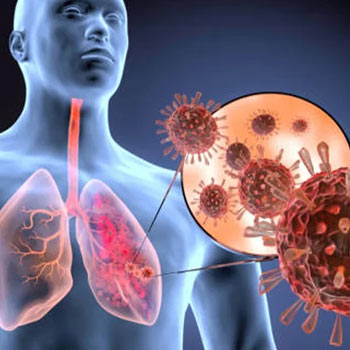Acute Respiratory Distress Syndrome Management
- Home
- Services
- Critical Care Medicine
- Acute Respiratory Distress Syndrome Management
What is Acute Respiratory Distress Syndrome (ARDS) Management?
Acute Respiratory Distress Syndrome (ARDS) is a severe, life-threatening condition characterized by widespread inflammation in the lungs. It results from various direct or indirect injuries to the lungs, leading to severe hypoxemia and respiratory failure. Effective management of ARDS is crucial to improve patient outcomes and reduce mortality rates. This article will delve into the comprehensive management strategies for ARDS
What is the significance of ARDS Management?
ARDS typically presents with rapid onset of severe dyspnea, hypoxemia, and bilateral pulmonary infiltrates on chest imaging, not fully explained by cardiac failure or fluid overload. Common causes include pneumonia, sepsis, aspiration, and trauma. The pathophysiology involves increased permeability of the alveolar-capillary barrier, leading to fluid accumulation in the alveoli and impaired gas exchange.

What are the key principles of ARDS Management?
Ventilatory Support
Low Tidal Volume Ventilation
The cornerstone of ARDS management is mechanical ventilation using low tidal volumes (6 mL/kg of predicted body weight). This approach minimizes ventilator-induced lung injury by reducing overdistension of the lungs
Positive End-Expiratory Pressure (PEEP)
PEEP is applied to prevent alveolar collapse at the end of expiration, improving oxygenation and reducing atelectasis. The optimal level of PEEP varies among patients and is titrated based on oxygenation and hemodynamic status
Prone Positioning
Prone positioning improves oxygenation by redistributing blood flow and ventilation, enhancing alveolar recruitment in the dorsal lung regions. It is recommended for patients with severe ARDS (PaO2/FiO2 < 150) and should be maintained for at least 12-16 hours per day
Fluid Management
Conservative Fluid Strategy
A conservative fluid management strategy aims to minimize fluid accumulation in the lungs, thereby reducing pulmonary edema and improving oxygenation. This approach involves careful monitoring of fluid balance and the use of diuretics to maintain a negative fluid balance
Pharmacologic Therapies
Neuromuscular Blockade
In severe ARDS, early use of neuromuscular blocking agents (NMBAs) for 48 hours can improve oxygenation and reduce the risk of ventilator-induced lung injury. This intervention is particularly beneficial during the first 48 hours of mechanical ventilation.
Corticosteroids
The use of corticosteroids in ARDS remains controversial. However, some studies suggest that early administration of corticosteroids may reduce inflammation and improve outcomes in certain subsets of patients. It is essential to weigh the potential benefits against the risks of prolonged steroid use
Adjunctive Therapies
Extracorporeal Membrane Oxygenation (ECMO)
ECMO is considered for patients with refractory hypoxemia despite optimal ventilatory strategies. It provides extracorporeal gas exchange, allowing the lungs to rest and heal. ECMO is typically reserved for severe cases with high mortality risk
Inhaled Nitric Oxide
Inhaled nitric oxide can be used as a rescue therapy to improve oxygenation in severe ARDS by selectively vasodilating pulmonary vessels, thereby improving ventilation-perfusion matching. However, its routine use is not recommended due to a lack of evidence for improved survival
Supportive Care
Nutritional Support
Adequate nutritional support is essential for critically ill patients. Enteral nutrition is preferred over parenteral nutrition, and early initiation is recommended to maintain gut integrity and prevent complications
Sedation and Analgesia
Proper management of sedation and analgesia is crucial to ensure patient comfort, facilitate mechanical ventilation, and prevent delirium. Protocols for daily sedation interruptions and targeted sedation levels should be implemented
Prevention of Complications
Measures to prevent common complications in ARDS patients, such as ventilator-associated pneumonia (VAP), deep vein thrombosis (DVT), and stress ulcers, should be incorporated into the care plan. This includes using semi-recumbent positioning, prophylactic anticoagulation, and stress ulcer prophylaxis
Effective management of ARDS requires a multidisciplinary approach, combining ventilatory strategies, fluid management, pharmacologic interventions, and supportive care. Adherence to evidence-based guidelines and protocols can significantly improve patient outcomes. Continued research and clinical trials are essential to refine and optimize ARDS management strategies further.
